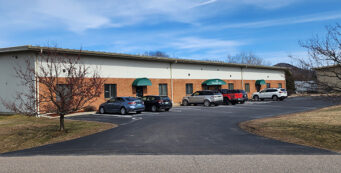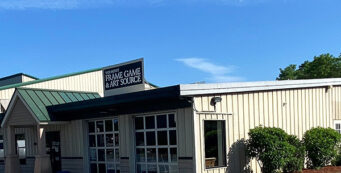The commercial real estate market will surprisingly close with a bang in 2021 given the historic strong demand for multifamily and industrial space and the resiliency of brick and mortars in serving consumer demand off-premises. The strong growth in these sectors made up for the weak and tenuous recovery in the office market. The year 2021 is also poised to be the strongest year in terms of investment acquisitions, surpassing the peak sales volume of 2006 and the pre-pandemic level.
In 2022, sustained household formation, strong consumer spending amid slower inflation and sustained wage growth, continuing re-entry to the office even if mostly on a hybrid schedule, and the expansion of construction and investments in secondary/tertiary markets will drive leasing, construction, and sales. Interest rates are on a course to increase with the Federal Reserve winding down its $120 billion monthly asset purchases and eyeing three federal funds rate hikes. However, interest rates will still be low compared to the pre-pandemic level and even if the T-note hits 2.5% by end of 2022, this will still be lower than the average rate of nearly 3% in 2018. Strong economic property market fundamentals will drive the growth in net operating income, especially in the multifamily and industrial market, and will continue to attract equity capital and sustain price appreciation.
With improving market fundamentals, investor acquisitions of multifamily, office, retail, and industrial properties of at least $2.5 million totaled $523 billion in the first ten months of the year. NAR expects the full-year level of acquisitions to hit nearly $645 billion, surpassing the prior peak level of acquisitions in 2006 of $581 billion. The multifamily market had a historic year, with 1.07 million units absorbed since the pandemic. The vacancy rate hit a record-low of 4.5% as of December 18 while the median asking rent growth hit a record high of 11% year-over-year. Rental demand soared amid the recovery in household formation and with home prices rising at a double-digit pace. Rental demand has increased across primary and secondary markets, with renters
returning to the major metro areas of New York, Washington DC, Boston, Chicago, San Francisco, and Los Angeles. However, metro areas in the Sunbelt markets had the largest increase in net demand, led by Dallas, Houston, Charleston, Wilmington, Savannah, and several Florida metro areas.
With sustained demand for online shopping, the industrial property market also had a record year, with nearly 700 million square feet of space absorbed since the pandemic and with rents soaring to a historic high of 8.4% as vacancy fell to an all-time low of 4.1%. The retail brick-and-mortars managed to survive broadly unscathed, except malls. Since 2020 Q2, 47.9 million square feet of space was absorbed, compared to just 29 million square feet of retail space absorbed in the 12 months before the pandemic hit. Malls saw a decline in occupancy, but that was offset by the positive net absorption from neighborhood centers, strip centers, and free-standing/single-tenant stores. Hotel occupancy and revenues also recovered with increased personal and business travel. As of December, occupancy was at 57% compared to 42% one year ago.
Only the office sector continued to shed office space use, even with strong job recovery and with the continued decline in the fraction of workers working from home, to just 11% from 35% in May. Since 2022, 142.5 million square feet of office space has been given back to the market, pushing the vacancy rate up to 12.5%. However, most of the space given back is concentrated in the primary metro areas of New York, Los Angeles, San Francisco, Washington DC, Chicago, and Boston. Secondary/tertiary metros like Boise, Austin, and many Florida metro areas have absorbed office space since the pandemic.
2022 Outlook:
Sustained Demand for Commercial Space and Investor Interest NAR expects the demand for commercial real estate to strengthen in 2022, even with the broad uptick in interest rates as the Federal Reserve moves aggressively to rein back inflation towards 2% given the strong demand and supply fundamentals underlying the demand for commercial real estate. In the multifamily market, higher mortgage rates will boost rental demand as a mortgage payment becomes more slightly expensive. NAR forecasts that the vacancy rate will further tighten to 4.8% in 2022 (5.1% in 2021) and rent growth to average at 10% (7.8% in 2021). Renters have started returning to the primary metro areas, of New York, Chicago, Boston, Washington DC, Los Angeles, and San Francisco, in part attracted by the huge rent discounts during the pandemic. However, asking rents are picking up strongly which will tend to drive renters to less expensive secondary/tertiary markets or to outlying suburbs of these primary metro areas, especially with the opportunity to work from home. Rental demand is likely to continue to be strong in the West region and New England states where owning is more expensive than renting. Meanwhile, retiring baby boomers are likely to fuel demand in the Sunbelt markets, which will boost demand for commercial space (retail and small offices).
The office market will continue to see an increase in net absorption with more workers returning to the office, even if on a hybrid schedule. The fraction of the workforce working from home will likely continue to notch down to 10%. A major breakout of omicron variant cases still poses as downside risk to the office market’s recovery. Meanwhile, the ongoing construction that is equivalent to 2.6% of the current inventory will further raise the vacancy rate to 13.5% (12.2% in 2021) and cause a decline in office rent by 0.8% (-1% in 2021). Demand for online shopping is likely to remain robust. While increased transmission of the omicron variant poses a downside risk for the office market, the converse is the case for the demand for industrial space, with consumers toggling between online and in-store shopping. With brick-and-mortars also moving to provide online shopping to complement in-store shopping, last-mile delivery services to consumers will continue
to drive the demand for warehouses and distribution centers. About 460 million square feet of industrials space is under construction, or about 2.6% of the current inventory. NAR foresees that this construction will lead to slower industrial rent growth of 7.4% on an annual basis from the current rate of about 8.4% as of 2021 Q4 (6.7% in 2021). The vacancy rate is expected to slightly increase to 5% (4.9% in 2021).
In the retail brick-and-mortar market, growth will continue to be driven by smaller shops such as neighborhood centers, strip centers, and single-tenant stores. Although mall traffic saw a return to pre-pandemic levels mid-summer 2020, concerns in regards to the omicron variant and increases in Covid cases could hinder foot traffic moving forward. Consumer traffic is likely to become stronger in 2022 as malls continue to increasingly look towards experiential retail such as gaming lounges and kid activities to drive in-store traffic.








